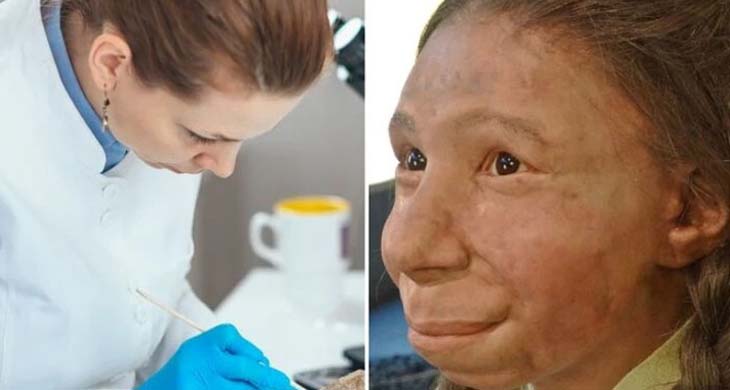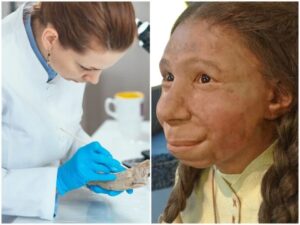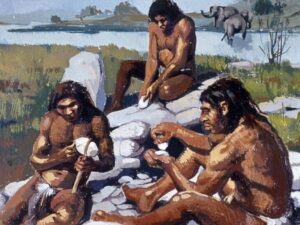This Girl Born From Two Different Species Challenges Everything We Know About Humans

A researcher in a lab somewhere in Germany has just discovered something shocking. She checks her notes and then checks them again, to make sure she hasn’t made a mistake — but her findings seem to be entirely accurate. What she has found is the remains of a human teenager that seems to have been born from two different species — a discovery that will forever change human knowledge of science and evolution.
The story starts many years back in Siberia, with a team of researchers finding a small fragment of a bone. At the time, they didn’t realize the bone was of human origin, so they didn’t pay very much attention to it. Much later, a paleontologist named Viviane Slon decided to try and extract DNA from the bone, as she was interested in its origins. She discovered that the bone had belonged to a hybrid human — something that had never before been discovered, making history.

For context, we must go back to prehistoric times, to learn about two species very similar to humans. The first one, the Australopithecines, had first appeared about 4 million years ago in Africa. While they had the ability to walk and climb, in most respects they were very different from what we now refer to as Homo sapiens. Gradually, changes arose — things such as bigger brains, the ability to hunt and eat meat, and longer legs to walk and run faster.

The second — an offshoot of the Homo species that slowly grew to resemble the modern human more and more — was known as Homo Heidelbergensis. This variant first appeared 700,000 years ago in Africa and Eurasia, and was even more different from the ones that came before.
One of the biggest differences was that Homo Heidelbergensis was smarter than previous iterations. They were much better at hunting as well, with the ability to create tools and work together to catch larger prey. Eventually, though, even Homo Heidelbergensis ended up dying out. However, by that point, even more species had grown and evolved from them — and one of these branches is where modern humans will finally come from.
Despite the knowledge that multiple different species of hominids existed at the same time, and the possibility that some from different species would have mated with each other at some point, there was no concrete proof of this assumption. However, all of that changed upon Viviane Slon’s amazing discovery.

Many people like to say that different species cannot mate with each other — but that’s actually not the case at all. One example of this happening is mules, which are a hybrid of a horse and a donkey. There is one small problem with this, though — in the case of mules, they are often sterile due to having an odd number of chromosomes. This is because reproduction takes 50% of each chromosome from the sperm and the egg. A donkey has 62 chromosomes while a horse has 64, leaving the resulting mule with 63 and therefore infertile.
That said, it’s not entirely impossible for the offspring of interspecies mating to be fertile. One example of this is the liger, which is the offspring of a lion and a tiger. Since lions and tigers, as well as many other large cats, have the same number of chromosomes, ligers are capable of reproducing as well. Many species of primates also have the same number of chromosomes, so any offspring resulting from interspecies mating in these cases would also be able to reproduce.
The assumption in this situation, of course, is that the different species of early humans had the same number of chromosomes. This would allow their offspring to reproduce as well, and carry on their lineage into the future. In fact, though there was no certain proof at the time, some scientists already believed that early Homo sapiens had mated with Neanderthals and produced fertile offspring. This would explain why so many Asians and Europeans have a small amount of Neanderthal DNA.




